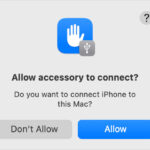Creating passport photos might seem like a daunting task, often involving trips to professional studios and incurring unnecessary costs. However, with the right guidance and tools, you can easily edit your passport size photos at home, saving both time and money. This guide will walk you through the essential steps to ensure your DIY passport photos meet all official requirements and are ready for your application.
One of the primary advantages of creating your passport photos at home is the significant cost savings. Professional passport photo services can be quite expensive, but by using online tools and your own camera, you can drastically reduce these expenses. Services like 123PassportPhoto offer a user-friendly platform to create compliant passport photos without breaking the bank.
Time efficiency is another compelling reason to edit passport photos yourself. Instead of scheduling appointments and traveling to photo studios, you can take and edit your photos in the comfort of your home at any time. The process with online tools is incredibly quick; for instance, 123PassportPhoto allows you to upload, edit, and download your passport photo in just a few minutes.
Many countries have specific requirements for passport photo backgrounds, often requiring a plain white background. Advanced online tools, including premium features on platforms like 123PassportPhoto, offer background enhancement capabilities. These features help adjust your photo to meet the stringent white background criteria, ensuring compliance with official guidelines.
Furthermore, high-resolution photos are crucial for passport applications. Reputable online services are designed to generate ultra-high-resolution passport photos suitable for high DPI printing. 123PassportPhoto, for example, ensures your photos are generated at 600 DPI, meeting professional printing standards. These high-quality images guarantee clarity and acceptance by passport authorities.
To begin, it’s important to understand the general passport photo requirements applicable across most countries. These typically include:
- Neutral Facial Expression: Maintain a neutral expression with your mouth closed and eyes fully open. Avoid smiling or frowning.
- Eyes Clearly Visible: Ensure your eyes are clearly visible and not obscured by hair or shadows.
- No Glasses or Hats: Unless for medical or religious reasons (with proper documentation), glasses and hats are generally prohibited in passport photos.
- Eyebrows Uncovered: Make sure your hair does not cover your eyebrows, keeping your facial features fully visible.
For detailed guidelines and photo-taking tips, resources like passport-photo-guidelines.php (replace with actual link if available from original context or a relevant external resource) can provide comprehensive information.
Once you have your digital photo, you can easily print your passport photos using a color printer. Here’s how:
- Download Your Photo Sheet: After editing your photo online, download the 4R sheet containing multiple passport photos.
- Choose the Right Paper: Use correct 4R photographic paper, opting for matte, semi-matte, or glossy finishes based on specific requirements.
- Print Without Margins: Ensure you print the 4R sheet with no margins so the images fit precisely on the 4R photo paper.
- Cut and Separate: Carefully cut along the gray lines on the printed sheet to separate your individual passport photos.
The process to create passport photos online using services like 123PassportPhoto is straightforward:
- Select Country and Photo Type: Choose your country and the type of ID photo you need, then click ‘Start’ on the platform.
- Upload Your Photo: Upload your digital photo. Ensure the file size is under 10MB and dimensions are less than 4000 x 3000 pixels. The system usually accepts JPG or JPEG files.
- Crop Your Photo: Use the cropping tool to adjust your photo to the correct passport photo size dimensions as specified by the service and guidelines.
- Enhance Background (Optional): If required, use the white background enhancement feature to adjust the background to plain white.
- Download Printable Sheet: Click ‘Next’ to generate a printable passport photo sheet, typically formatted for 4R (4×6″) photo paper.
- Save and Print: Save the 4R sheet and print it at home using a photo printer or at a local photo center.
Taking passport photos of babies requires extra care and patience. Here are some tips for baby passport photos:
- Prepare the Setup: Lay a white or light-colored baby quilt or blanket in a well-lit room. Natural light works best.
- Position Your Baby: Lay your baby on the quilt or blanket, ensuring they are comfortable and secure.
- Photo Requirements: Ideally, the baby should be looking straight at the camera with their eyes open and mouth closed. A neutral expression is preferred, but capturing a perfect expression for babies can be challenging, so aim for clarity and visibility of facial features.
For more detailed tips on taking baby passport photos, you can refer to resources like make-baby-passport-photos.php (again, replace with a relevant link if available).
Passport photo size requirements vary slightly by country. For specific dimensions and regulations for different countries, you can find detailed information at resources like passport-photo-requirements.php (replace with a relevant link).
In conclusion, editing passport size photos at home is not only feasible but also a practical and economical solution. By following these steps and utilizing user-friendly online tools like 123PassportPhoto, you can create compliant, high-quality passport photos efficiently and conveniently. This DIY approach empowers you to manage the process from start to finish, ensuring you have perfect passport photos ready for your next application without the traditional hassle and expense.
For more tutorials and guidance on making passport photos, explore resources like passport-photo-tutorials.php (replace with a relevant link if available).
